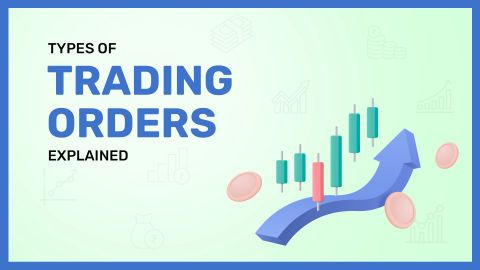Stock orders represent the different ways to buy or sell shares in the financial markets. They are essentially instructions specifying the stock quantity and price. Multiple stock market order types exist in the share market to serve the diverse needs of investors and offer them the ability to customise their trades. Let us understand them in detail using simple examples.
Also read: Stock options
What is an order in the share market?
In the stock market, an order refers to the instructions given by an investor. These instructions relate to buying or selling a specific quantity of stocks at a specified price. Brokers or trading platforms execute these instructions on behalf of the investor.
For example,
- Say you want to buy 100 shares of a company called XYZ Ltd.
- Based on your analysis, a perfect entry point exists at Rs. 500 per share.
- To initiate the buy transaction, you placed a buy order with your broker.
- While doing so, you provided the following information:
- Stock market order type: Limit order
- Quantity: 100 shares
- Price: Rs. 500 per share
- Once placed, your broker executes this limit order when the price per share is Rs. 500 or less.
There are several components of stock orders. Let us understand some of the key ones:
Order type in the share market
- It must be noted that investors can provide different types of instructions to their brokers.
- To do so, there exist several types of orders, such as:
- Market orders
- Limit orders
- Stop orders, and many more
- Each type has its own rules and conditions for execution.
Quantity
- This specifies the number of shares or contracts the investor wants to buy or sell.
Price
- When placing limit orders, an investor specifies the:
- Maximum price (for a sell order), or
- Minimum price (for a buy order)
- A trade gets executed at this specified price.
- However, for market orders, this price is not specified, and the trade is executed at the prevailing market price.
It must be noted that orders can also be placed to buy or sell bonds. Know the difference between stocks vs. bonds.
What are the different stock market order types?
In financial markets, different participants have diverse trading strategies and financial goals. The availability of multiple stock market order types offers variety and serves these diverse needs. Let us have a closer look at some prominent stock orders:
Type I: Market order
Using a market order, an investor instructs their broker to buy or sell a specified quantity of stock at the best available price in the market. Let us see an example:
- An investor wants to buy 50 shares of ABC Ltd.
- At the time the order is placed, the current market price of ABC Ltd. is Rs. 600 per share.
- The investor submits a market order to buy 50 shares.
- The market order gets executed immediately at the prevailing market price, which is Rs. 600 per share.
- The broker purchases the 50 shares of ABC Ltd. for the investor at Rs. 600 per share.
A limit order allows an investor to specify a particular price at which they are willing to buy or sell a specified quantity of a financial instrument.
For example,
- An investor wants to buy 100 shares of XYZ Ltd. at Rs. 680 per share.
- The current market price of XYZ Ltd. is Rs. 700 per share.
- The investor submits a limit order to their broker.
- They specify buying 100 shares at Rs. 680 per share.
Now, the broker will only execute this order if the market price of XYZ Ltd. drops to Rs. 680 per share or lower. Let us see what will happen in the two possible situations:
The market price reaches Rs. 680 or below |
The market price does not reach Rs. 680 per share or lower |
|
|
Type III: Stop-loss order
Investors use a stop-loss order to limit potential losses. It is an instrument of risk management designed to:
- Automatically trigger a market order
- To sell a security
- Once its price reaches the stop price
Let us observe through an example how a stop-loss order works:
- You hold 200 shares of ABC Ltd at Rs. 800 per share.
- Based on your technical analysis, you expect the stock price to decline.
- To protect yourself from losses, you place a stop-loss order to sell 200 shares at Rs. 750 per share (stop price).
- By doing so, you specify that 200 shares be sold automatically if the market price of ABC Ltd. drops to Rs. 750 per share or below.
- Now, say the market price of ABC Ltd. starts to decline and reaches Rs. 750 per share.
- At this point, your stop-loss order will get triggered.
- It gets converted into a market order and will:
- Sell 200 shares of ABC Ltd.
- At the prevailing market price, which is Rs. 750 per share
Conclusion
Stock orders are instructions given to a broker. By using the different stock market order types, investors can express their trading intent and the quantity and price at which they want to execute the trade. Some popular order types in the share market are market orders, limit orders, and stop-loss orders.
Do you know there exist different types of stocks in the market? Learn about undervalued stocks and cyclical stocks today.




